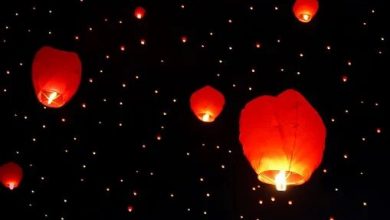I, Pencil is an essay written by Leonard E. Read, which tells the story of a simple wooden pencil and explores the complex network of individuals, skills, and resources involved in its creation. The pencil serves as a metaphor for the spontaneous order and creative power of free markets. The essay emphasizes the importance of individual freedom, voluntary cooperation, and the division of labor in driving economic prosperity and innovation.
“I, Pencil” ultimately promotes a belief in the power of free markets and individual freedom, suggesting that central planning and government intervention hinder the natural creative forces that drive innovation and economic growth. The essay concludes by urging readers to recognize and appreciate the miracles of spontaneous order and to have faith in the capabilities of free individuals.
I, Pencil | Summary
“I, Pencil” is an essay that personifies a wooden pencil, narrating its journey from its humble beginnings as a tree to its complex production process involving a vast network of individuals and resources. The pencil expresses a sense of being taken for granted and overlooked despite its remarkable origins. It argues that it symbolizes a multitude of miracles and carries a profound lesson about the wonders of spontaneous order and the importance of individual freedom.
The essay begins by introducing the pencil as a writing instrument and stating that its sole purpose is to write. It highlights its intriguing story and laments being undervalued and seen as a common object. It emphasizes the need for people to wonder and appreciate the extraordinary aspects of everyday items. It invites the reader to examine it closely, revealing its components: wood, lacquer, printed labeling, graphite lead, metal, and an eraser. The pencil then delves into its rich family tree, starting with the cedar tree from which it originates in Northern California and Oregon. It describes the intricate process of logging and the myriad skills involved in bringing the cedar logs to the mill, including mining, steelmaking, rope production, and food cultivation. The essay emphasizes the interconnectedness of various individuals and industries in creating the pencil.
After the logs are transported to a mill in San Leandro, California, the pencil explains the intricate millwork required to transform the cedar logs into thin slats. It highlights the use of wax, kiln drying, and the addition of tint to enhance its appearance. The essay acknowledges the multitude of skills and processes involved, such as concrete pouring for power generation, transportation logistics, and the collaboration of countless individuals to transport the slats across the nation. Once in the pencil factory, the slats undergo a series of processes using complex machinery, including the application of grooves, the insertion of leads, and the use of glue. These processes culminate in the creation of the pencil’s “wood-clinched” sandwich structure. The essay describes the extensive refining process for graphite, which involves miners, toolmakers, paper sack manufacturers, shipping personnel, and lighthouse keepers.
The pencil’s “lead” is explained to contain no actual lead but a complex mixture of graphite and clay, with additional additives and treatments to enhance its properties. It mentions the mining of graphite in Ceylon, the refining process using clay from Mississippi, and the incorporation of various agents and waxes to improve the leads’ strength and smoothness. The pencil reveals that it receives six coats of lacquer, prompting a discussion about the diverse ingredients involved in making lacquer. It mentions castor bean growers, castor oil refiners, and numerous other individuals contributing to the production of the resin used in the lacquer. The labeling on the pencil is described as a film made of carbon black and resins, with details about their manufacturing process.
The pencil’s ferrule, made of brass, leads to a discussion about the mining of zinc and copper and the skills required to convert them into sheet brass. The essay highlights the presence of black nickel on the ferrule and explains its application. It also explores the creation of the eraser, which involves a rubber-like substance made from rape-seed oil and various chemicals. The essay touches on vulcanization and the sourcing of pigments. The pencil concludes by emphasizing that the creation of a pencil involves the collaboration of countless individuals, each contributing a tiny fraction of the knowledge and expertise required. It argues that no single person possesses the complete know-how to make a pencil, just as no individual could create a tree. The essay asserts that the absence of a central planner or mastermind is a testament to the power of voluntary cooperation and the “Invisible Hand” at work.
The essay contends that acknowledging the spontaneous order and creative power of free individuals is crucial for preserving freedom. It argues that faith in free people is essential, as it allows creative energies to flourish and leads to prosperity. It warns against relying on governmental “master-minding” and central planning, using mail delivery as an example. It concludes by celebrating the accomplishments of free individuals and the incredible advancements made possible by voluntary cooperation.
I, Pencil | Analysis
The essay effectively employs personification by giving voice to the pencil, which serves as a persuasive technique to engage the reader emotionally and anthropomorphize the object. By presenting the pencil as a narrator with feelings and a desire to be appreciated, the essay attempts to evoke empathy and curiosity in the reader. While the essay portrays the pencil as a marvel of interconnectedness, it simplifies the complexity of modern production processes.
The essay primarily attributes the pencil’s creation to individual human efforts and the spontaneous order of free markets. It does not delve into the influence of external factors such as regulations, environmental impact, labor conditions, or the role of innovation and technological advancements. The essay’s narrow focus on the creative power of individuals and the absence of centralized direction might overlook potential challenges and issues within the economic system.
The essay presents a strong case for free markets and minimal government intervention by contrasting the pencil’s production with the idea of government “master-minding.” While it highlights the achievements of voluntary cooperation, it simplifies the role of government to a monolithic entity that stifles creativity and efficiency. It does not acknowledge the potential benefits that government regulations and interventions can bring, such as consumer protection, environmental safeguards, or infrastructure development. The essay does not engage with alternative viewpoints or address potential drawbacks, such as income inequality, externalities, or market failures that might require government intervention.
The essay’s focus is on the economic aspects of production and the efficiency of free markets. It largely overlooks other important considerations, such as social welfare, sustainability, and the impact on marginalized communities. By prioritizing economic prosperity, it neglects broader discussions about the distribution of resources and the social consequences of market-driven systems.
I, Pencil | Themes
The essay celebrates the concept of spontaneous order, wherein the countless individual actions of self-interested actors contribute to the overall coordination and functioning of society. It argues that the marvel of the pencil’s creation arises naturally from the voluntary cooperation and exchange of individuals pursuing their interests. This theme emphasizes the idea that complex systems can emerge without central planning or a “master mind.”
“I, Pencil” champions individual liberty and the strength of free markets. It implies that letting creative energy flow freely and organizing a society in accordance with the ideals of voluntary collaboration and individual liberty leads to increased wealth and progress. The article argues against overly interventionist government and emphasizes the role of free individuals in promoting innovation and economic success.
“I, Pencil” asserts the importance of having faith in free individuals and their capacity to organize and create without the need for central direction. It suggests that a belief in the abilities of individuals to voluntarily cooperate and respond to market demands is crucial for maintaining freedom and fostering economic prosperity.
The essay presents a critique of centralized planning and governmental “master-minding.” It argues that relying on central authorities to direct economic activities inhibits the natural creative forces and limits the potential for innovation and progress. It advocates for a decentralized, market-driven approach to economic organization.
I, Pencil | Character Sketch
The protagonist of “I, Pencil” is the pencil itself, which serves as a narrator sharing its story and reflecting on its creation. The pencil is portrayed as a modest and unpretentious character. It acknowledges its simplicity and readily admits that its appearance may not be striking or remarkable at first glance. The pencil displays a curious nature, pondering its existence and the intricate process that brings it into being. It questions why it is often taken for granted and seeks to share its story to provoke wonder and appreciation.
The pencil acknowledges that writing is its vocation and avocation, emphasizing its dedication and purpose. The pencil sees itself as a symbol of miracles, representing the interconnectedness of countless individuals, skills, and resources involved in its creation. It aims to highlight the extraordinary nature of everyday objects and the complex web of human endeavors required to bring them into existence.
I, Pencil | Literary Devices
The essay personifies the pencil, giving it human qualities and a voice. By doing so, it allows the pencil to narrate its own story and engage the reader on a more emotional level, fostering empathy and curiosity.
The pencil serves as a metaphor throughout the essay. It symbolizes the complexity of interconnectedness and the wonders of spontaneous order within economic systems. By using the pencil as a metaphor, the text explores broader themes of cooperation, division of labor, and the marvels of everyday objects.
The essay employs vivid imagery to paint a picture in the reader’s mind and enhance their understanding. It describes the various components and production processes of the pencil in rich detail, allowing readers to visualize the intricate steps involved in its creation.
The text utilizes anecdotes and examples to support its arguments and engage the reader. It recounts specific instances, such as the roles of different individuals in the production of the pencil, to provide concrete evidence and make the narrative more relatable.
The essay employs rhetorical questions to prompt reflection and encourage readers to contemplate the significance of the pencil’s story. By posing questions such as:
“Does anyone wish to challenge my earlier assertion?”
And
“Isn’t it because we realize that we could not make one?”
The essay alludes to the ideas of thinkers like G. K. Chesterton, who observed that humanity perishes not for the lack of wonders, but for the lack of wonder. By referencing Chesterton’s observation, the text adds credibility and depth to its argument while inviting readers to explore additional philosophical and intellectual avenues.
The essay repeats certain phrases and ideas to emphasize their importance and create a rhetorical impact. For instance, the repetition of the phrase “I, Pencil” throughout the text reinforces the pencil’s role as the central narrator and protagonist.
At times, the essay employs hyperbole to emphasize its points and create a sense of astonishment. It exaggerates the impression that no one on Earth understands how to produce a pencil and that making one is an almost miraculous effort, enhancing the reader’s appreciation for the complexity required.



